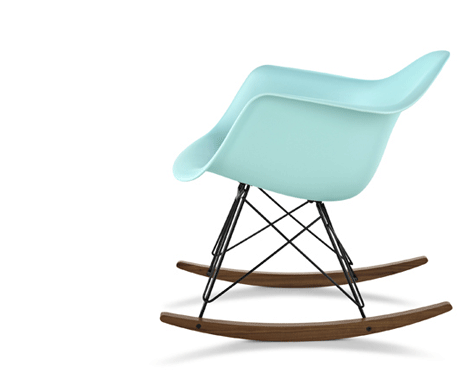
The Eames Molded Plastic Chair, created by Charles and Ray Eames for Herman Miller, is being reintroduced in fibreglass, but in a new, more environmentally sensitive material chemistry and manufacturing process.
First introduced by Herman Miller in 1950 as the first mass-produced plastic chair, the iconic design continued to evolve throughout the years with new colors, height options, base variations, and the application of upholstery.
By the late 1980s it had become evident that fiberglass reinforced plastic shells, the original ‘plastic’ material, were detrimental to the environment, in both their manufacturing process and at the end of a chair’s useful service.
The material chemistry and the inability to recycle the fiberglass led Herman Miller, in consultation with then-widowed Ray Eames, to eventually discontinue its production in 1989. Herman Miller continued to explore alternative materials and began offering a recyclable polypropylene version, reintroducing the Molded Plastic chairs in 2000.
Today, more sustainable fiberglass material chemistry, and new manufacturing processes, mean a design icon in the lightly textured surface of fiberglass is available once more.
This is lovely – especially when Herman Miller have also faithfully reproduced the original colour pigments, and you can watch your investment age in that way fibreglass does – but there’s a potential problem.
For anyone having walked into a bar or cafe of late in, lets say, the trendier parts of the Capital, you will have noticed the unmistakeable shape of an Eames chair, but most likely a fake.
Now anyone can have one of these sat in their home, office or workplace due to the relatively inexpensive Chinese knock-offs that have flooded the market.
It’s without doubt that Herman Miller is trying to crack down on these unlicensed reproductions, yet they persist because of the demand for lower cost items. The reason they’re lower cost? The labour costs, build quality and materials.
So if demand for the more ecological fibreglass chairs rises, you can bet on a factory in the Far East producing shady reproductions from a far from ecological fibreglass material, at double the demand, with no hope for a clean product lifecycle.
You can’t criticise Herman Miller for wanting to bring back a classic, and for doing it in such an ecological manner, but the market for Eames’ molded chair extends much greater than the genuine article.
The greater impact this could have might undo all the careful hard work and investment that reintroducing the Eames Molded Plastic Chair originally set out to do.
With issues of intellectual property, copyright and the seemingly unstoppable production of fakes from the Far East, is this something ecologically-minded companies should consider when designing products for the modern market?






